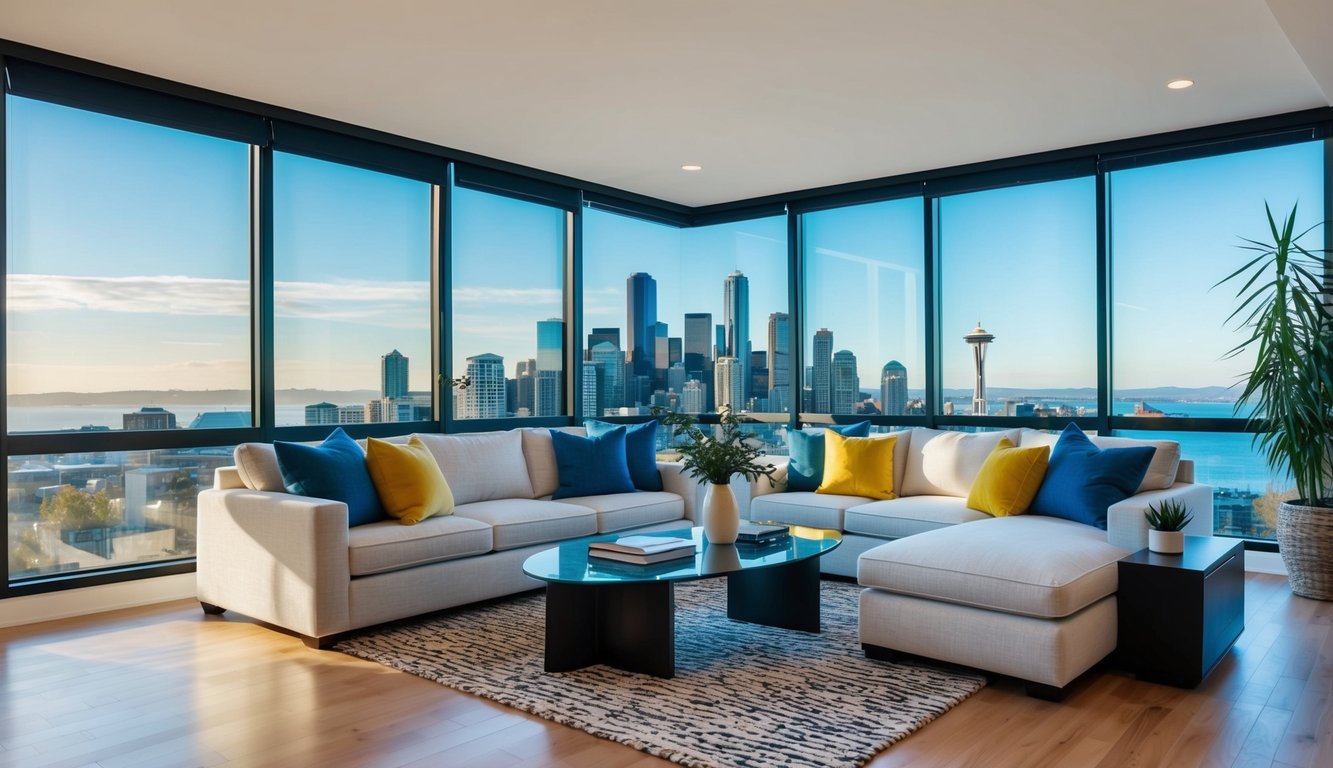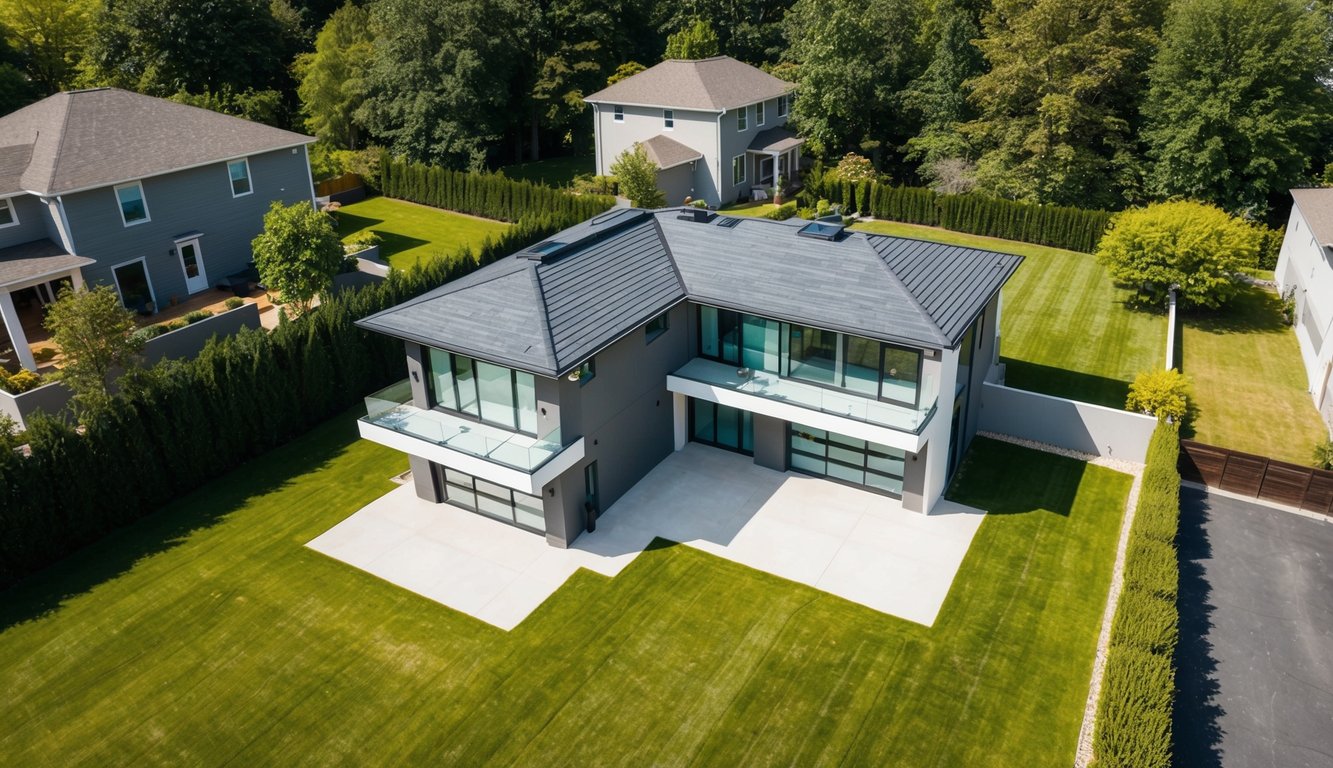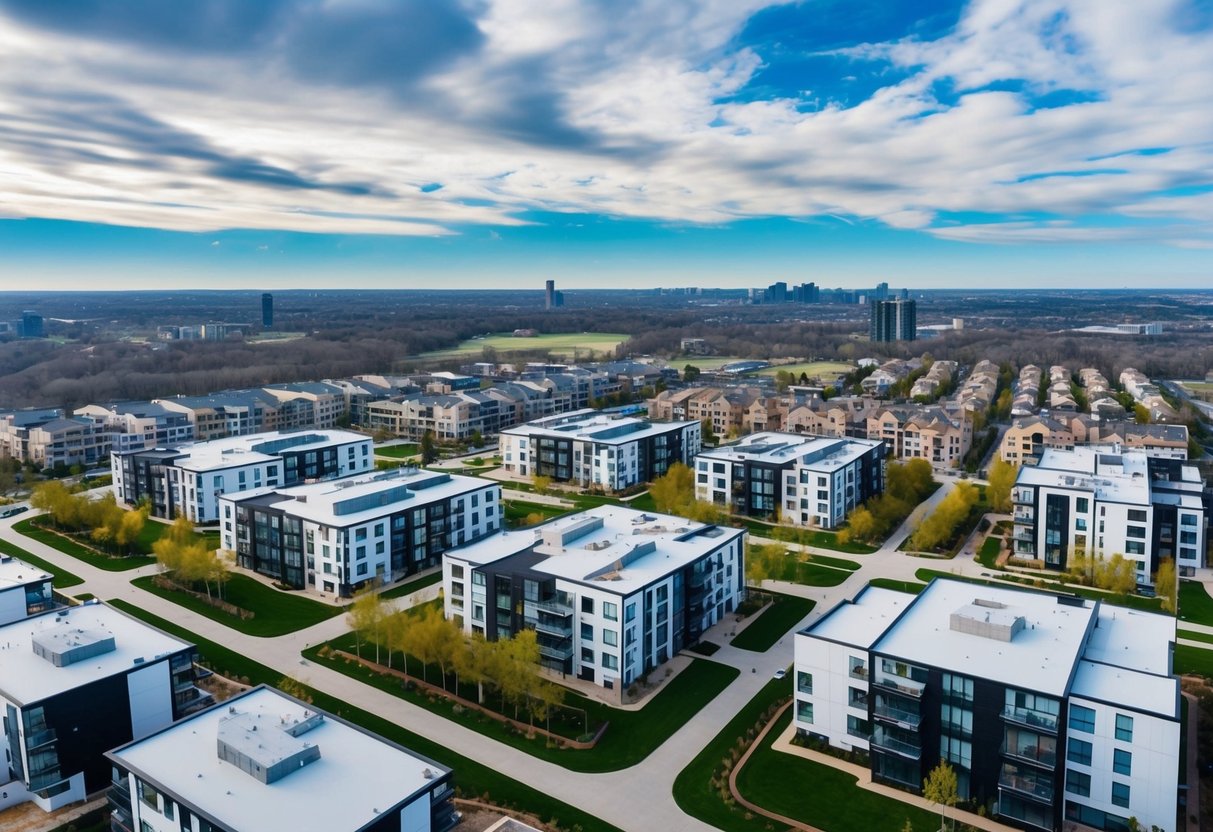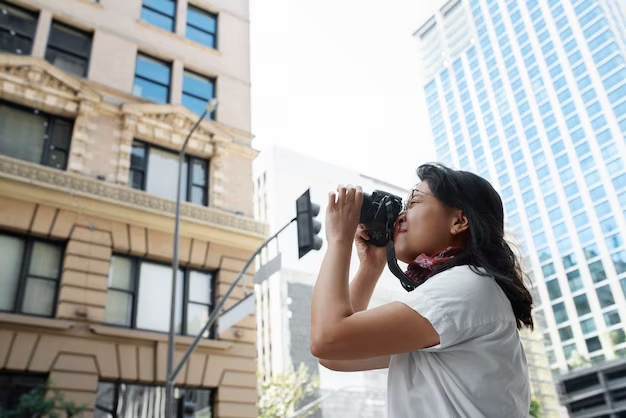Real estate photography can make or break a property listing in Seattle’s competitive market. Stunning photos are key to attracting potential buyers and showcasing a home’s best features. We’ll explore the essential techniques and tools needed to capture eye-catching real estate images in the Emerald City.

From the Space Needle to Mount Rainier, Seattle offers unique backdrops for property photos. We’ll cover how to highlight these iconic landmarks while keeping the focus on the home itself. We’ll also dive into lighting tricks, composition tips, and post-processing methods to make Seattle properties shine.
Whether you’re a realtor looking to boost your listings or a homeowner preparing to sell, this guide will help you navigate the world of Seattle real estate photography. We’ll share insider knowledge on preparing homes for photoshoots, choosing the right equipment, and even using drones for aerial shots.
Key Takeaways
- Professional real estate photos are crucial for selling properties in Seattle’s market
- Proper preparation, equipment, and techniques create standout property images
- Showcasing Seattle’s unique features can enhance real estate photography
Best Locations For Real Estate Photography In Seattle

Seattle offers many great spots for real estate photography. We’ve found some neighborhoods that really shine in photos.
Queen Anne has amazing views of the city skyline and Space Needle. Its hilltop location creates stunning backdrops for luxury homes.
Waterfront properties in West Seattle provide gorgeous Puget Sound and Olympic Mountain vistas. The beach areas here are perfect for capturing coastal living.
Capitol Hill features charming historic homes and tree-lined streets. Its mix of old and new architecture offers diverse photo opportunities.
Magnolia boasts lush green spaces and water views. Discovery Park in this area gives a natural, secluded feel to property photos.
Downtown Seattle high-rises allow for dramatic urban shots. The city lights and iconic buildings create an impressive backdrop.
Ballard combines maritime charm with modern development. Its mix of condos, craftsman homes, and waterfront properties photograph beautifully.
• Top Seattle neighborhoods for real estate photos:
- Queen Anne
- West Seattle
- Capitol Hill
- Magnolia
- Downtown
- Ballard
We recommend scouting these areas for the best real estate photography results in Seattle.
Essential Equipment For Real Estate Photography In Seattle

We recommend starting with a high-quality DSLR or mirrorless camera for Seattle real estate photography. The Canon 5D Mark IV is a popular choice among professionals.
For lenses, a wide-angle zoom is crucial. We suggest a 14-30mm lens for capturing spacious interiors and exteriors. This focal range covers about 90% of typical real estate shots.
A sturdy tripod is essential for maintaining sharpness in low-light conditions. We also recommend investing in a remote shutter release to minimize camera shake.
Lighting equipment is vital in Seattle’s often overcast weather. A set of portable flashes or LED panels can help brighten interiors and balance natural light.
Here’s a quick checklist of essential gear:
- Full-frame camera body
- Wide-angle zoom lens (14-30mm)
- Standard zoom lens (24-70mm)
- Tripod
- Remote shutter release
- Portable flash units or LED panels
- Spare batteries and memory cards
Don’t forget post-processing software like Adobe Lightroom for editing your Seattle real estate photos. This helps enhance images and maintain consistency across your portfolio.
Lastly, consider adding a drone to your kit for aerial property shots. This can set your work apart in Seattle’s competitive real estate market.
Lighting Techniques For Seattle Real Estate Photography

Seattle’s unique weather poses challenges for real estate photographers. We need to adapt our lighting techniques to capture properties in their best light.
On cloudy days, we use flash to brighten interiors. A speedlight or strobe helps add warmth and definition to rooms. We bounce the flash off ceilings or walls to create soft, even lighting.
For sunny days, we balance indoor and outdoor light. We use HDR techniques or flash to avoid dark interiors and blown-out windows. Neutral density filters on our lenses can also help tame bright sunlight.
The “golden hour” just after sunrise or before sunset offers magical light for exterior shots. We schedule shoots during these times when possible for warm, flattering illumination.
On rainy days, we focus on cozy interior lighting. Table lamps, fireplaces, and overhead fixtures create inviting ambiance. We may need to bump up our ISO or use longer exposures to capture enough light.
Key lighting tips:
- Use diffusers to soften harsh light
- Position lights to minimize reflections and glare
- Adjust white balance for accurate colors
- Combine natural and artificial light for balanced exposure
Composing The Perfect Seattle Real Estate Shot
We know that capturing Seattle’s real estate requires a keen eye for detail and an understanding of the city’s unique character. Let’s explore some key techniques for composing stunning real estate photos in Seattle.
First, we always use a wide-angle lens to showcase spacious interiors. This helps potential buyers get a better sense of the room layout and size.
When framing Seattle real estate shots, we consider the following elements:
- Natural light
- Architectural features
- Views of the city or nature
We aim to highlight Seattle’s iconic landscapes whenever possible. This might mean capturing a glimpse of the Space Needle or showcasing a beautiful Puget Sound view.
For exterior shots, we pay attention to:
• Curb appeal • Surrounding greenery • Unique architectural details
Indoor photography requires careful staging. We remove clutter and arrange furniture to create an inviting atmosphere. Proper lighting is crucial, so we use a mix of natural and artificial light to brighten spaces.
In Seattle’s often cloudy weather, we make sure to capture the cozy indoor ambiance. This can involve highlighting fireplaces, large windows, or other warm, inviting features.
Post-Processing For Seattle Real Estate Photography
Post-processing is crucial for creating stunning Seattle real estate photos. We use specialized editing software to enhance images and showcase properties in their best light.
Popular editing tools for Seattle real estate photography include Adobe Lightroom and Photoshop. These programs allow us to adjust exposure, contrast, and color balance.
Seattle’s often overcast skies can be a challenge. We use sky replacement techniques to add vibrant blue skies when needed, creating a more appealing look.
Here are key post-processing steps we follow:
- Adjust white balance
- Correct exposure
- Enhance contrast
- Sharpen details
- Remove distractions
- Straighten vertical lines
We also pay attention to window views. Seattle’s scenic landscapes are a big selling point, so we make sure to properly expose both interiors and exterior views.
Color accuracy is important. We calibrate our monitors and use color profiles to ensure consistent results across different devices.
For efficiency, we create custom presets tailored to Seattle’s lighting conditions. This helps streamline our workflow while maintaining quality.
Virtual staging is another useful technique. We can digitally add furniture to empty rooms, helping potential buyers visualize the space.
Showcasing Seattle’s Iconic Landmarks In Real Estate Photos

Seattle’s famous landmarks can add incredible value to real estate photos. We recommend incorporating these icons to give potential buyers a sense of the property’s location and surroundings.
The Space Needle is Seattle’s most recognizable landmark. Including it in your shots can instantly communicate the property’s proximity to downtown.
Mount Rainier offers a stunning backdrop for homes with a view. Capturing this majestic peak in your photos can highlight a property’s scenic appeal.
Other landmarks to consider:
- Pike Place Market
- Seattle Great Wheel
- Chihuly Garden and Glass
- Olympic Sculpture Park
When photographing properties, we suggest scouting locations that offer views of these landmarks. Balconies, rooftop decks, and large windows are great spots to showcase Seattle’s iconic skyline.
For interior shots, try framing landmarks through windows. This technique can create a powerful visual connection between the home and its surroundings.
Remember to visit iconic Seattle photo spots to capture the best angles of these landmarks. Timing is crucial – early morning or golden hour often provide the most flattering light.
Aerial Photography For Seattle Real Estate

Aerial photography has become a game-changer for Seattle real estate. We use drones to capture stunning views of properties from above, giving potential buyers a unique perspective.
Aerial photography offers many benefits for both sellers and buyers in Seattle’s real estate market. It shows the property’s layout, surrounding landscape, and nearby amenities.
Key advantages of aerial real estate photography in Seattle:
• Highlights property features • Showcases the neighborhood • Demonstrates proximity to landmarks • Provides context for property size
We use advanced drones to get high-quality images and video. Our skilled pilots navigate Seattle’s airspace safely and legally to capture the best shots.
Popular aerial views for Seattle properties include:
- Skyline shots with the Space Needle
- Waterfront properties along Puget Sound
- Aerial tours of large estates
- Neighborhood overviews
Seattle aerial photographers can help your listing stand out. We create eye-catching visuals that grab attention and increase interest in properties.
Drone photography works well for various Seattle property types:
- Luxury homes
- Waterfront properties
- Large land parcels
- Commercial buildings
By using aerial photography, we give potential buyers a comprehensive view of Seattle properties. This helps them make informed decisions and increases the chances of a successful sale.
Preparing Seattle Properties For Real Estate Photography

Getting Seattle homes ready for real estate photos is crucial. We’ve put together a checklist to help agents and homeowners prepare:
Exterior:
- Mow lawn and trim hedges
- Remove cars from driveway
- Put away garbage bins
- Clean windows and gutters
Interior:
- Declutter all rooms
- Make beds and fluff pillows
- Remove personal items and photos
- Clean thoroughly, especially kitchens and bathrooms
Lighting is key in Seattle’s often gray weather. We recommend:
- Opening all curtains and blinds
- Turning on all lights, including lamps
- Replacing any burnt-out bulbs
For the best results, consider these additional tips:
- Stage key rooms with fresh flowers or a bowl of fruit
- Hide cords and electronics
- Remove seasonal decorations
- Clean mirrors and glass surfaces
Real estate photography prep can make a big difference. A well-prepared Seattle property will shine in photos, attracting more potential buyers.
Remember to address any minor repairs before the shoot. Small issues can be noticeable in high-quality photos.
We also suggest clearing countertops in kitchens and bathrooms. This creates a clean, spacious look that appeals to buyers.
Marketing Seattle Real Estate With Professional Photography

Professional photos are crucial for marketing Seattle real estate. High-quality images grab attention and showcase properties in the best light.
We recommend using stunning photos in online listings. Eye-catching pictures help Seattle homes stand out on popular real estate websites and apps.
Real estate photography is key for social media marketing too. We post beautiful property photos on Instagram, Facebook, and Pinterest to reach potential buyers.
Here are some effective ways to use professional real estate photos:
• Virtual tours • Property brochures • Email newsletters • Postcards and flyers
Professional photos work well for both print and digital marketing. We make sure to use high-resolution images that look great on all devices.
It’s important to highlight Seattle’s unique features in real estate photos. Views of the Space Needle, Puget Sound, or Mount Rainier can really sell a property.
We also use drone photography to capture aerial shots of homes and neighborhoods. This gives buyers a new perspective on properties.
Architectural photography is another useful tool. It shows off a home’s design and craftsmanship in detail.
Hiring A Professional Real Estate Photographer In Seattle

When hiring a Seattle real estate photographer, we need to look at a few key factors. Experience is crucial. We want someone who knows the local market and has a track record of great shots.
A strong portfolio is a must. We should ask to see examples of their work, focusing on properties similar to what we’re selling. This helps us gauge their style and skill level.
Pricing can vary widely. We recommend getting quotes from several photographers to compare. Remember, the cheapest option isn’t always the best value.
Finding professional real estate photography in Seattle is easier than ever. We can start by asking for recommendations from other real estate professionals. Online directories and review sites are also helpful.
When evaluating Seattle real estate photography services, we should consider:
- Equipment quality
- Turnaround time
- Additional services (like virtual tours or drone shots)
- Editing capabilities
It’s important to communicate our needs clearly. We should discuss the property’s features, any challenging aspects, and our timeline. This ensures we get the best possible results.
Frequently Asked Questions

Real estate photography requires skill, equipment, and techniques to showcase properties effectively. We’ll cover key aspects of capturing stunning images that appeal to buyers.
What equipment is essential for high-quality real estate photography?
A wide-angle lens is crucial for real estate photography. It helps capture more of each room in a single shot.
A sturdy tripod is also important. It keeps the camera steady for sharp images, especially in low light.
What techniques should photographers use to capture the best features of a property?
We recommend shooting from corners to make rooms appear larger. This technique gives a better sense of the space.
Highlighting unique features like fireplaces or built-in shelving can make listings stand out. These details often catch buyers’ attention.
How important is lighting when photographing real estate and how should it be managed?
Lighting is critical in real estate photography. Natural light often works best for creating bright, inviting images.
We suggest opening curtains and blinds to let in as much daylight as possible. For darker areas, using flash or additional lighting can help balance the exposure.
What are some tips for shooting home interiors that will appeal to potential buyers?
Decluttering is key before a shoot. Remove personal items and excess furniture to make spaces feel larger and more neutral.
We also recommend straightening pillows, bedding, and window treatments. These small touches can make a big difference in the final images.
In what ways can post-processing enhance real estate images for marketing purposes?
Color correction can improve the overall look of photos. Adjusting white balance ensures accurate colors that reflect the true appearance of the property.
Removing minor imperfections like scuff marks or small blemishes can also enhance the final product. This helps present the property in its best light.
What guidelines should photographers follow when creating real estate videos?
Steady camera movement is crucial for professional-looking videos. Use a gimbal or stabilizer to achieve smooth pans and transitions.
Including both wide shots and close-ups gives viewers a comprehensive look at the property. This variety keeps the video engaging and informative.






















